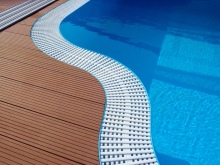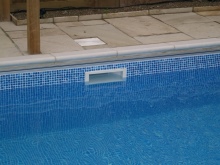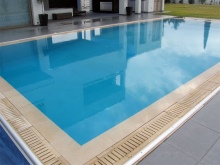Pool Tile
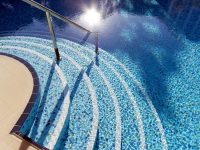
Requirements
The construction of the pool - the case is quite complex. To build it correctly, there are a number of rules and requirements for both the facing material itself and the work itself.
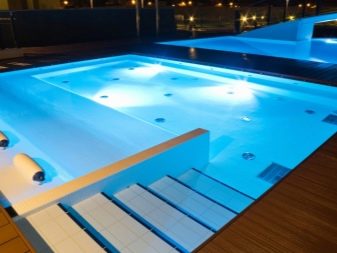
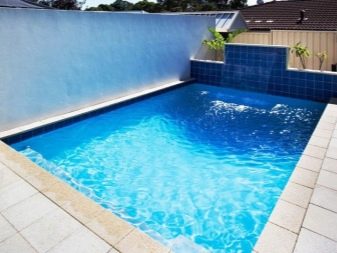
It is necessary to consider the following most important requirements for the finishing material:
- Water absorption. This is the coefficient responsible for the penetration of moisture in the material. It should not exceed 3% of the norms of European standards. After all, over time, the tile can get saturated with moisture and become easily deformable;
- Resistance to chemically active substances. Finishing material must be able to withstand the effects of detergents and chlorine;
- Ceramics must have properties such as impact resistance and immunity to temperature changes;
- Anti-slip. Ceramics must be traumoproof, since there is water nearby, and after all, to slip on wet tiles is easy. This applies to the most dangerous areas: the descent into the water, steps and tiles around the pool. Therefore, coating material must be a system of protection against slipping. It can act in the form of relief surface or roughness, and the tile can be covered with a special composition to increase friction;
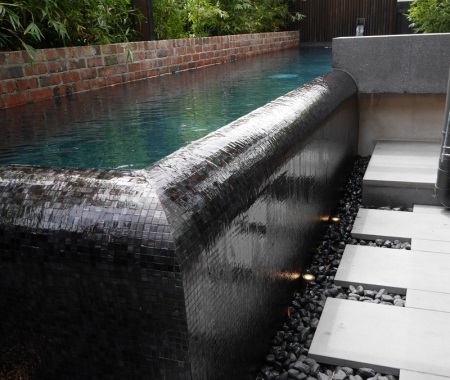
- Flexibility. This is due to the fact that water presses on the surface, so there must be compensation for this pressure;
- Strength. This requirement is due to the same water pressure, which creates a load on the walls of the pool. The structure should be completely safe in operation;
- Absence of porosity. If the tile has this feature, then it can not be applied to the facing of the pool, because the constant exposure to water can erode the material, which will lead to its destruction. In addition, the voids of the finishing material can be a source of growth of bacteria and mold.
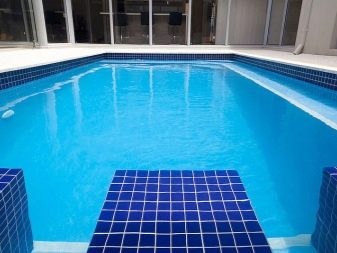

Depending on the anti-slip tile is divided into three classes: A, B and C. Information about the class can be found by reading the characteristics of the tiles on the packaging. Such tiles are tested for slope during production. Depending on the slope on which the foot is held, the tile gets one or another category. For example, if the barefoot will be held at a slope of 12 degrees, then such tiles are classified as category A, if at 18 - to class B, if 24 - category C.
- Class A - is used to tile the floor of the premises of the swimming pool, where the humidity is kept to a minimum. Such areas include locker rooms and recreation areas. Also, this category of tile lined walkways, where the moisture is almost never. In addition, allowed with the help of this tile tile bowl of the pool, provided that its depth is more than 80 centimeters.
- Class B - is used in places with high humidity: showers, staircases with a width of 1 meter, the sides of which have railings, paths for pedestrians with bare feet, near the boardroom, swimming pools for beginners and children with a bowl of up to 80 centimeters.
- Class C - mainly used for lining the area around the pool, the sides of the bowl. It is extremely not recommended to use this type of tile for the steps to the pool and the surfaces that go under the slope.
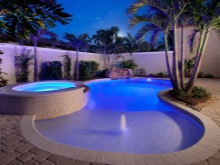
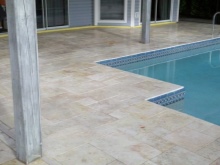

Facing tiles for the pool are usually purchased ceramic or glass.
Glass
Glass tiles - the most popular and popular material lining the pool, because the most important indicator - water absorption - in this category of tiles tends to zero.
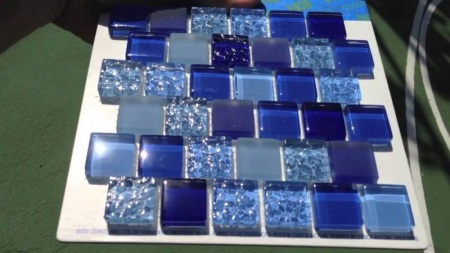
Among its positive qualities are the following indicators:
- high resistance to moisture;
- durability;
- resistance to high and low temperatures - the glass can withstand a temperature range from -30 to +145 degrees and 100 processes of freezing/defrosting;
- resistance to chemically active substances, and its color does not tarnish;
- absence of pores in the structure of tiles;
- high impact resistance due to additional treatment with firing;
- a variety of paints with the addition of different substances, which gives the play of reflections under water.
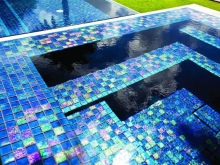
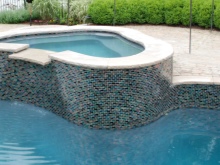
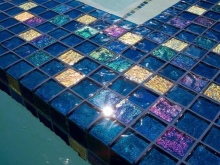
Mosaic
Mosaic is a type of glass tile. Usually the appearance of mosaics is standard - small squares for more detailed tiling. A distinctive feature of mosaic tiles is that it is flexible. This allows the installation of mosaics on absolutely any curved surfaces.
Also note that the mosaic is also an attractive tile design and, as a rule, with an anti-slip surface. However, the cost of such tiles is quite expensive, so most often consumers abandon this option.
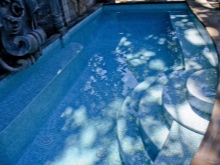
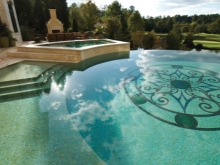
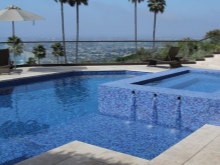
Porcelain tiles
Porcelain tiles provide the best waterproofing and prevent the formation of fungus. It consists of white clay, quartz, kaolin and feldspar, and metal oxides give it a unique color. Such tiles are fired over 1000 degrees, which gives the tiles a surface indistinguishable from glass, as well as strength and high density.
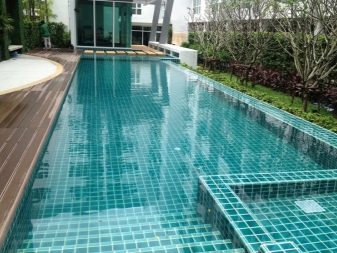
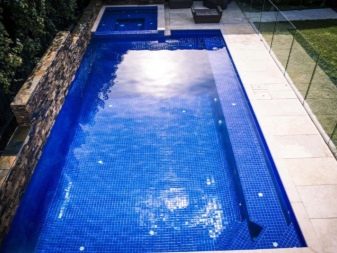
Clinker
Clinker tiles are used for laying around the pool. Clinker is a natural material, which is based on soft clay and chamotte. Of the features of this product can be noted the following: minimum water absorption - only 0.5%, durability, anti-slip coating, and the tile is able to withstand huge differences in temperature.
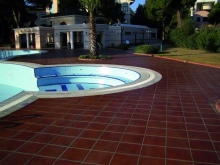

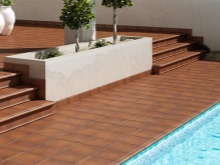
Tiles for the area around the pool
For laying the area around the outdoor pool will suit a special tile. A number of manufacturers offer uncomplicated options for the arrangement of this area. For example, the company Oset offers its customers porcelain tiles, which are similar to pebbles and flagstone, which will look natural on the background of brightly colored pool. The company Cerim produces special porcelain stoneware that imitates marble. Decking is especially popular - decking or modular parquet. The coating does not absorb moisture, is not subject to the growth of harmful microorganisms, is not susceptible to ultraviolet rays and does not deform.
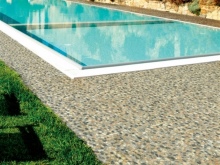
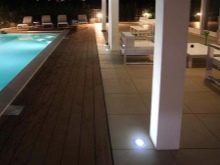
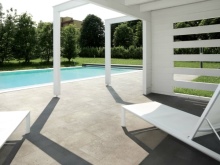
Tiles for the board
The board for the pool performs a number of functions. For example, it is able to hold the wave in the process of bathing, because often the water splashes out, which leads to its refilling. Basically, you can use tiles for the edge of the pool. Also note such material as edging stone, ceramics, fine-grained concrete and others. To finish the sides of a frame pool, installed on the street, often use clapboard.
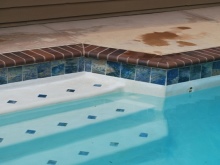
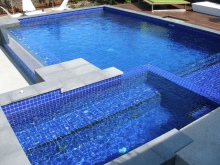
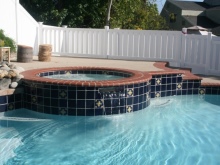
Sizes and shapes
For the bowl of the pool, it is better to choose a tile of small size due to the fact that the finishing material can crack because of the enormous pressure that the water has. Considered already large size dimensions of 150x150 mm and 125x250 mm. The best size will be 100x100 mm.
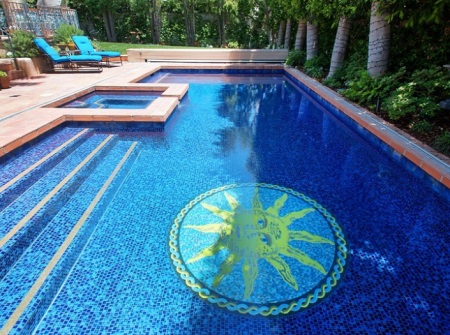
Specially designed for pool sides, steps, and other structural components, the shaped parts will help ensure a quality finish in any problem areas. They'll help close corners, and they'll help make mud in those areas a lot less. When you use shaped parts, the design solution will look completely complete. Especially since they help to save finishing material.
Note that the tiles for the pool have rounded edges. Therefore, only special tiles are used for its facing.
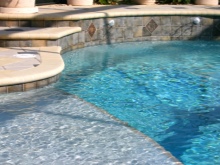
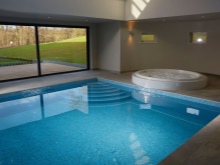

Color solutions
The most common color shades are blue and blue. It is not uncommon to find white with green and black with red or gold.

Also note that all tiles are presented in collections. In each set, there are compositions that have their own direct purpose. For example, the background tiles are designed for the walls of the bowl and its bottom. Therefore, when looking in detail, you can see that the surfaces of the tiles are different.
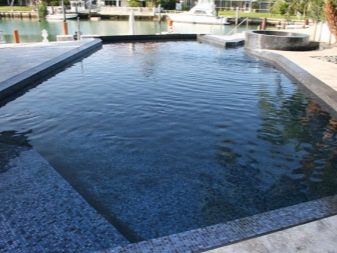
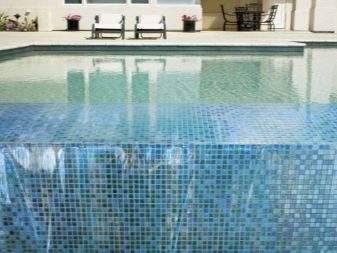
In addition to the main tile, the series has a decor, which are panels and friezes. The design of the decorative elements is as close to the marine theme as possible.
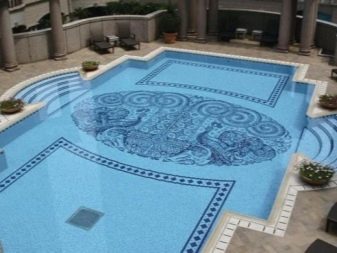
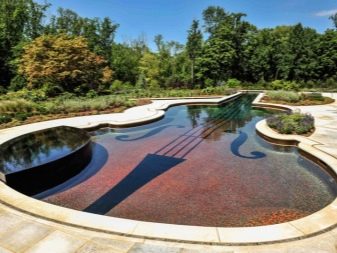
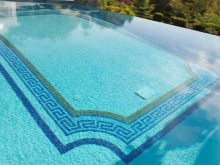
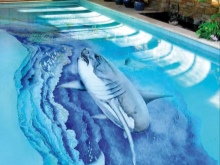
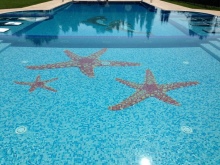
Producers
Of domestic manufacturers, the following promising companies should be singled out: Russian factory "Kerama Marazzi" and the factory "Sokol". Pool tile from these manufacturers have low water absorption and frost resistance.
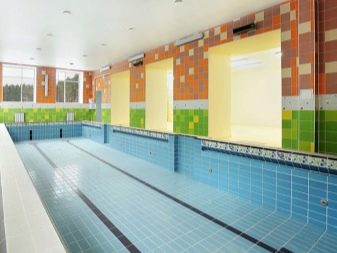
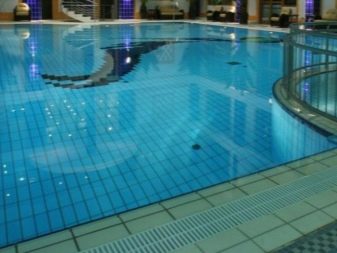
Of foreign manufacturers, the following companies stand out: Interbau (Germany), Versatile, Ezarri (Spain), Rose, JNJ (China).
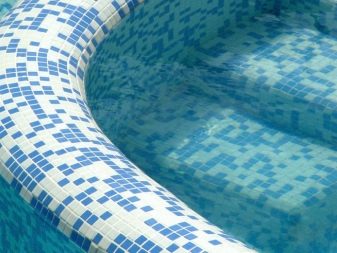
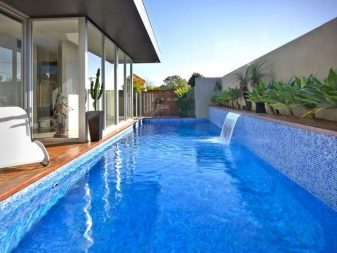
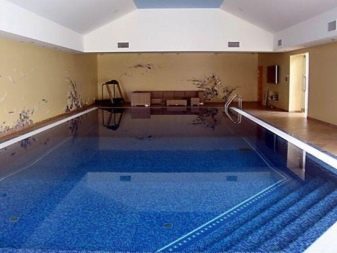
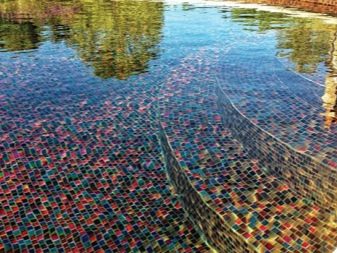
Tips for choice
The basic requirements for pool tiles have been listed above. It is only worth adding that when choosing the facing material It is best to choose a mosaic glass tiles or porcelain. And other options are better put aside, because they do not guarantee the quality that you get when using glass and porcelain tiles. Additionally, it is worth paying attention to the design and care of the facing material in use.
Exterior design. To date, there are many different designs of ceramic tiles, which may well fit all the necessary criteria and still have an attractive appearance.
Ease of maintenance. Roughness and relief in the design of tiles can seriously complicate the process of care for the pool.


Tile laying
In the process of laying, it is highly recommended to use a special adhesive for the pool.
It should differ in the following qualities:
- frost resistance;
- water resistance;
- elasticity.
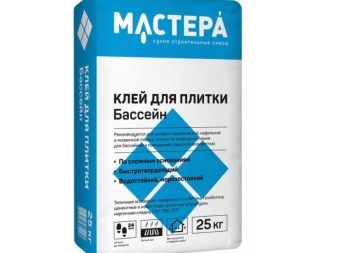
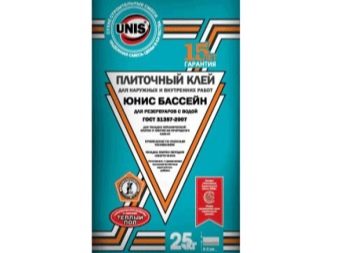
For tiles it is recommended to use adhesive with adhesion of 1 MPa, for mosaics - 2.5 MPa. To ensure maximum adhesive effect, it is better to choose a latex-based adhesive. If the adhesive is chosen correctly, the cladding material will last quite a long time.
The average cost of dry mixture is 1.4-1.5 kg per 1m² at a thickness of 1 mm. However, in practice it comes out from 2.3 to 7 kg of mixture.
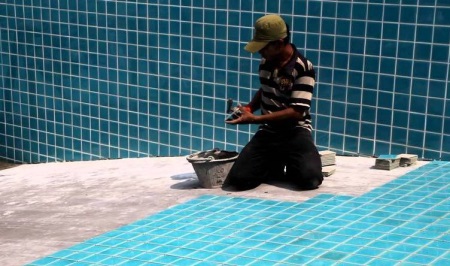
As a grout for swimming pools is mainly used 2-component epoxy grout.
It has the following distinctive qualities:
- waterproofness;
- resistance to chemically active substances;
- does not contaminate;
- durability - service life over 50 years;
- high cost;
- experience is necessary when using.
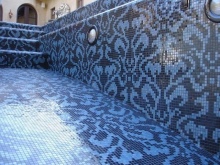
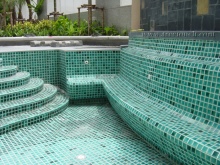
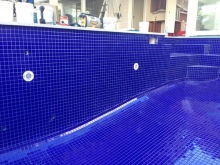
Overflow protection
Thanks to this protection, water circulation in the pool is brought back to normal, and the water that goes outside the pool, does not flood the surrounding area. This protection can be installed at the edges of the pool. It looks like hidden grooves.
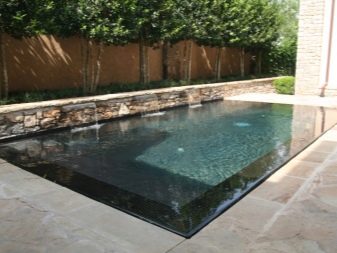
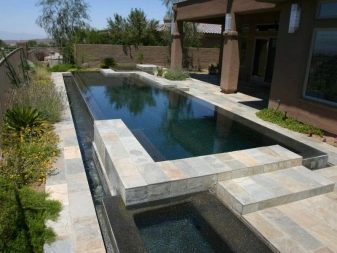
Three types of protection are distinguished: "Finnish Shore", "Zurich Shore" and "Wiesbaden Shore".
- Finnish Shore is a surface made at an angle and rises from the wall to the overflow, and the hand grip is made in the form of grooved tiles. It is mostly used in large pool complexes.
- Zurich Shore. The chute is located behind or adjacent to the edge of the structure. The drain is elevated. Can serve as a hand grip. Used in public pools.
- Wiesbaden shore is high-level. With this protection, the overflow channel is flush with the water surface. The thickened edge acts as an overflow and hand grip. The protection is used in all types of pools.
- Wiesbaden shore low level. This type of gutter is placed below the floor level by about 25-30 cm. The lack of a guard at the groove allows swimmers to hold on to it, and the beveled slabs ensure that the waves subside quickly.
